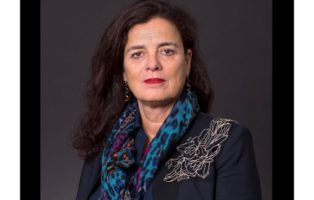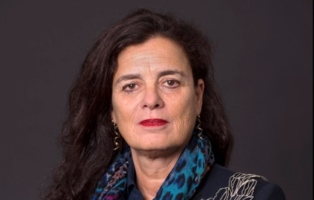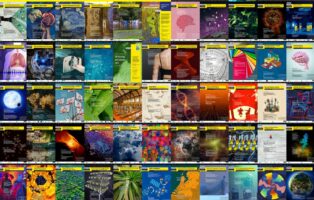About the Distinguished Lorentz Fellowship Ceremony
The Distinguished Lorentz Fellowship (DLF) is a personal award, given to a leading scientist who carries out cutting-edge research that bridges humanities, social sciences, technological sciences and natural sciences. It was set up by the Netherlands Institute for Advanced Study (NIAS-KNAW) and the Lorentz Center Leiden.
As Sijbolt Noorda, Chair of the NIAS-Lorentz Advisory Board, explained at the end of the DLF ceremony, Corinne Hofman fully deserved this year’s Distinguished Lorentz Fellowship, since the quality of her research is outstanding. She fulfills the ideal of interdisciplinarity, which Hofman showed during her talk with a trans-disciplinary research design that includes education, legislation, archaeology, geochemistry, network science and much more.
New perspective on the first colonial encounters
Hofman explained that the research project NEXUS1492, an international and trans-disciplinary research project funded by the European Research Council, aims to develop sustainable heritage management strategies to do something about the neglected indigenous history and legacy of the Caribbean. Since the Caribbean’s indigenous archaeological record is under threat from erosion, earthquakes, storms, but also human impact, by the establishment of hotels and golf courses, placing it within a contemporary heritage agenda will hopefully increase the awareness and protection of heritage resources.
NEXUS1492 is subdivided into four projects. Hofman herself is the Corresponding principal investigator of NEXUS1492 and lead investigator of two projects, of which one forms the archaeological backbone of NEXUS1492: transformations of indigenous cultures and societies across the historical divide are examined in order to bridge the pre-colonial and colonial era. This way, it is clarified how indigenous societies dealt with European colonisation, how they reoriented themselves after constant shifts of power relations, how change manifested itself in terms of lifeways and deathways and how technological traditions changed across the historical divide. The second project focusses on the views on and uses of the Caribbean past as cultural heritage in the present by dealing with three subprojects: practical tools for heritage management, the relationship between communities and museum collections, and the engagement of communities through outreach and collaboration. A third project is led by Prof. Gareth R. Davies (VU), who works on the development and application of methods to address the circulation of materials and objects and transformations in patterns of human mobility and diet. A last project focusses on the transformations of archaeological networks of people, objects and ideas and is led by Prof. Dr. Ulrik Brandes (Konstanz). With this project, archaeology is brought the potential to model relations between past cultures, communities, and individuals as opposed to emphasizing the inherent qualities of such entities, through network approaches. Together, these projects aim to provide a new perspective on the first colonial encounters in the Caribbean and raise awareness of Caribbean histories and legacies. More information on NEXUS1492 can be found on the corresponding website.
Indigenous heritage
After Hofman discussed the objectives of the project, she elaborated on what has been discovered so far. She gave examples of the more than three hundred new archaeological sites that were documented. In particular those along the so-called Ruta de Colón: the route that Columbus took in 1494 when first travelling from the coast to the inland of Hispaniola on the quest of gold. Along this route the first interactions between the European colonizers and the Indigenous peoples took place. These initial encounters are reflected in the material culture repertoire in which Amerindian, Spanish, and later also African influences are mixed.
During her talk, Hofman also presented the trailer of a documentary to the audience, which is currently being made as a final product of the project. The trailer shows the indigenous heritage that is left in the Caribbean. Local individuals and communities elaborate on their traditions and explain what they have learned about their ancestors with the help of the project.
Concluding, 25 September’s afternoon has shown the audience the Caribbean’s unexpected diversity, and it has provided a much more nuanced picture that opens up decades of future research. All of this had not been possible had one feared surprises and complications, but, as Noorda mentioned towards the ended of his laudatio, fear of complexity and surprise clearly does not apply to Professor Hofman.
Future plans
During her stay at NIAS, Hofman aims to develop a comparative approach by looking at the deep histories of West Africa and the Pacific, where similar processes of exploitation, domination, and neglect have taken place. She will also focus on the launch of an exposition relating to NEXUS1942, with the name ‘Caribbean Ties’, opening in May 2019 in Museon in The Hague, Cuba, Haiti, the Dominican Republic, Puerto Rico, St. Eustatius, Guadeloupe, Martinique, Dominica, Grenada, Barbados, Suriname, and Aruba. Finally, Hofman is organising a workshop called ‘Intersecting Worlds: The Interplay of Cultures and Technology’ at the Lorentz Center in Leiden that will take place from 14 January until 18 January. All are welcome to attend.
Report by Annika Weites



